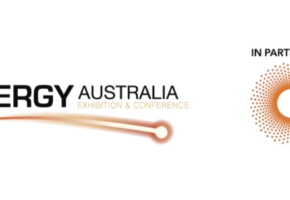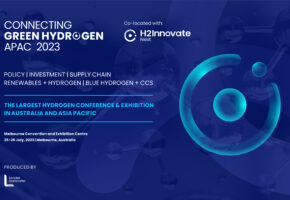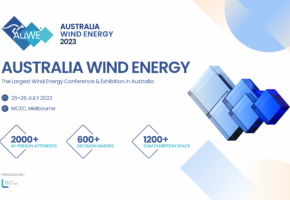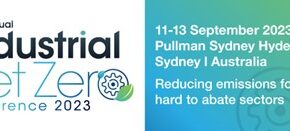What is a Corporate Renewable Energy PPA? Deal Types in the Australian Market
When
Renew Economy wrote about the
launch of the Business Renewables Centre Australia last year, there was a comment underneath the article: ‘Does anyone actually understand how Corporate PPAs work?’
It’s a fair question.
The basic concept seems quite simple – the buyer pays a fixed price for the electricity and/or green certificates from a wind or solar farm (usually for 10 years or longer) – but there has been a proliferation of bespoke deal types and technical jargon in Australia.
‘Virtual’, ‘Modified Virtual’, ‘Sleeved’, ‘Supply-Linked’ are just some of the terms used to describe different types of Corporate Renewable Energy PPAs (RE PPAs). Sometimes, people even use different terms for the same type of deal.
RE PPAs can help buyers meet ambitious sustainability objectives, reduce their exposure to volatile electricity prices, and electricity bills – but many find them confusing and the transaction costs can be significant.

The Business Renewables Centre Australia (BRC-A) has just released the
Deal Structure Guide to try and de-mystify Corporate RE PPA deal structures (available to BRC-A members in the
BRC-A portal). Here we give you a quick overview of the major deal types, their key differences and why buyers choose them.
Wholesale or Retail PPAs?
Corporate PPAs are relatively young here, but Australian lawyers have quickly become world leaders in PPA innovation, finding a variety of ways to structure RE PPAs. However, for most organisations considering RE PPAs, there is a threshold choice: do you want to pursue a Wholesale or Retail PPA?
A Wholesale PPA is negotiated directly with a renewable energy developer whereas under a Retail PPA you buy from a solar or wind farm via a retailer who holds the direct agreement with the project.
There are also a number of other RE PPA deal structures (e.g. a PPA behind the meter on your property or through another intermediary that is not your retailer) but our primary focus here is Wholesale and Retail PPAs.
Wholesale PPAs
Under a Wholesale PPA, the buyer holds an agreement directly with the solar or wind farm. The buyer pays a fixed price per megawatt-hour (MWh) to the solar or wind farm (usually with an annual escalation factor). In exchange, they receive the revenue from the production sold in the wholesale electricity market and usually the green certificates [Large Generation Certificates (LGCs)].
There are two primary types of Wholesale PPAs in Australia:
- A ‘Financial PPA’ is purely a financial contract or hedge negotiated between a project and buyer – it has no relationship with the consumer’s energy demand, retail electricity supply agreement and electricity bills. They are often known as a ‘Contract-for-Difference’. The two parties agree on a fixed ‘strike price’ for the PPA but the cash-flows will vary month to month based on the actual wholesale electricity price.

If the wholesale price is higher than the RE PPA strike price, the project pays the buyer and vice-versa. So, for example, if the strike price is $70/Megawatt-Hour (MWh) and the average pool price in that state received by the wind or solar farm is $90/MWh, the project pays the buyer $20/MWh.
In that way, they operate like a ‘green hedge’ against higher prices. If a buyer has a RE PPA equivalent to 20 per cent of their load (remember it has no relationship with electricity demand or bills) and the wholesale electricity price increases, they receive income from the RE project which partly offsets the increase in their electricity prices for the rest of their load.
2. a
‘Sleeved PPA’ is a hybrid PPA which is negotiated directly with a project and then integrated with the buyer’s retail electricity supply agreement.

A good example of a sleeved PPA is the deal made by the University of New South Wales with Sunraysia Solar Farm and Origin – which is shown in the figure beneath.

The buyer:
- pays the renewable energy project the fixed price when the output of the solar or wind farm matches their load;
- sells surplus electricity to the retailer when project generation > buyers load;
- buys electricity from their retailer when buyers load > project generation (e.g. night-time for a solar PPA).
Retail PPAs
Under a
Retail PPA, the buyer pays for electricity and/or LGCs from a renewable energy project that is being developed and owned by or holds a contract with their retailer. The buyer is not a direct party to the PPA between the project and retailer. They agree a fixed rate for the output of the RE project and a rate under their standard retail agreement for the remainder of their load.

Retail PPAs can have a variety of differences, and some include a direct relationship with the project, such as proof of LGCs being created by that project.
Other PPA Deal Types
There are a range of other deal types such as:
- LGC-only PPAs – buyers get a fixed price on their LGC liability and can achieve savings through a long-term commitment.
- Self-owned: investing directly in and owning large-scale renewable energy on their own site.
- Intermediaries: a third-party other than a retailer or the project developer can also be the counter-party with the buyer. Such deals are very similar to Financial PPAs but with a different intermediary between the project and buyer(s). There are also secondary trading platforms being developed to on-sell RE PPAs.
What are the most popular types of RE PPAs in Australia?
Over the past two years, around 45 Corporate RE PPAs have been negotiated in Australia and many other organisations are looking at PPAs.
What is the most popular type of deal? Interestingly, there is quite an even spread in the number of deals between Wholesale, Retail and Other PPA.
Figure 1: Corporate RE PPAs – Deal Types (%)

Like the US, big Australian corporates initially used Financial PPAs and these remain popular with larger organisations – but the Australian market is diversifying into retail PPAs. There is also a significant number of other PPAs (primarily LGC-only deals made by state governments).
Why do organisations choose to go for a Wholesale or a Retail PPA?
As the diversity of deals made by Australian buyers shows, there is no ‘right answer’. The key factors considered by buyers are administrative simplicity, the options available at different energy volumes, value considerations and accounting treatment.
Table 1: Retail and Wholesale RE PPAs – Key Factors
| |
Wholesale |
Retail |
| Negotiation simplicity |
If there are multiple sites, a Wholesale PPA avoids complex integration of retail contracts. |
Negotiating a PPA with a retailer requires less expertise and may be simpler than a Wholesale PPA. |
| Market Options |
Usually Wholesale PPAs are negotiated > 40-50 Gigawatt-Hours (GWh) p.a. |
Options for wholesale PPAs narrow < 40-50 GWh p.a.
Some projects offer Wholesale PPAs under this threshold – but otherwise buyers may need to contract together for a Wholesale PPA. |
| Value |
A Wholesale PPA can deliver a lower price due to more competition and greater transparency. |
Retail PPAs may offer greater options for smaller buyers, especially < 30 GWh p.a. |
| Flexibility |
As Wholesale PPAs are not linked to demand or retail, this is more flexible with organisations who may significantly change demand in the future, or have demand across multiple states |
Long term retail contracts generally can only be done once for a buyer, reducing ability to change renewable power %, technology and other options in future. |
| Accounting |
Some organisations are more comfortable with a derivative such as a financial PPA |
Some organisations prefer to avoid a derivative structure or face regulatory limits on their use |
Wholesale or Retail PPAs can better suit different organisations depending on their circumstances. However, based on the type of organisations that select Wholesale or Retail PPAs, the key factor appears to be size – and associated resources and expertise in energy procurement.
Table 2: Examples of Retail and Wholesale RE PPAs
| Wholesale |
Retail |
| Bluescope |
Melbourne Renewable Energy Group (consortium included councils, universities, Australia Post, banks) |
| Commonwealth Bank |
South Sydney Regional Organisation of Councils (NSW) |
| Mars |
Ascham Girls School |
| Carlton United Brewery |
Anca (Manufacturing) |
| University of Technology |
Pernod Ricard Winemakers |
| Viva Energy |
University of Newcastle |
Where can you learn more about how to do an RE PPA and choosing a deal type?
It can be a challenge for new buyers to work through complexity, jargon and range of options, particularly when communicating to other internal stakeholders. We have deliberately simplified the menu here to the key choices but there are other options within these broad deal types.
Some organisations issue a Request for Information and/or Request for Proposal specifying either a Wholesale or Retail PPA, others issue open RFIs and consider their preference as they evaluate different proposals.
The BRC-A has a Buyers Roadmap which takes organisations through the process for doing an RE PPA step-by-step.
If you want to learn more about deal structures, how they work and what’s involved in doing an RE PPA, you can join the BRC-A (it’s free!) for access to our buyers roadmap and tools, template and primers.
Chris Briggs & Jonathan Prendergast, Technical Directors, BRC-A.
chrisb@businessrenewables.org.au
jonathan@businessrenewables.org.au
 The Business Renewables Centre Australia (BRC-A) has just released the Deal Structure Guide to try and de-mystify Corporate RE PPA deal structures (available to BRC-A members in the BRC-A portal). Here we give you a quick overview of the major deal types, their key differences and why buyers choose them.
The Business Renewables Centre Australia (BRC-A) has just released the Deal Structure Guide to try and de-mystify Corporate RE PPA deal structures (available to BRC-A members in the BRC-A portal). Here we give you a quick overview of the major deal types, their key differences and why buyers choose them.
 If the wholesale price is higher than the RE PPA strike price, the project pays the buyer and vice-versa. So, for example, if the strike price is $70/Megawatt-Hour (MWh) and the average pool price in that state received by the wind or solar farm is $90/MWh, the project pays the buyer $20/MWh.
In that way, they operate like a ‘green hedge’ against higher prices. If a buyer has a RE PPA equivalent to 20 per cent of their load (remember it has no relationship with electricity demand or bills) and the wholesale electricity price increases, they receive income from the RE project which partly offsets the increase in their electricity prices for the rest of their load.
2. a ‘Sleeved PPA’ is a hybrid PPA which is negotiated directly with a project and then integrated with the buyer’s retail electricity supply agreement.
If the wholesale price is higher than the RE PPA strike price, the project pays the buyer and vice-versa. So, for example, if the strike price is $70/Megawatt-Hour (MWh) and the average pool price in that state received by the wind or solar farm is $90/MWh, the project pays the buyer $20/MWh.
In that way, they operate like a ‘green hedge’ against higher prices. If a buyer has a RE PPA equivalent to 20 per cent of their load (remember it has no relationship with electricity demand or bills) and the wholesale electricity price increases, they receive income from the RE project which partly offsets the increase in their electricity prices for the rest of their load.
2. a ‘Sleeved PPA’ is a hybrid PPA which is negotiated directly with a project and then integrated with the buyer’s retail electricity supply agreement.
 A good example of a sleeved PPA is the deal made by the University of New South Wales with Sunraysia Solar Farm and Origin – which is shown in the figure beneath.
A good example of a sleeved PPA is the deal made by the University of New South Wales with Sunraysia Solar Farm and Origin – which is shown in the figure beneath.
 The buyer:
The buyer:
 Retail PPAs can have a variety of differences, and some include a direct relationship with the project, such as proof of LGCs being created by that project.
Retail PPAs can have a variety of differences, and some include a direct relationship with the project, such as proof of LGCs being created by that project.
 Like the US, big Australian corporates initially used Financial PPAs and these remain popular with larger organisations – but the Australian market is diversifying into retail PPAs. There is also a significant number of other PPAs (primarily LGC-only deals made by state governments).
Like the US, big Australian corporates initially used Financial PPAs and these remain popular with larger organisations – but the Australian market is diversifying into retail PPAs. There is also a significant number of other PPAs (primarily LGC-only deals made by state governments).





